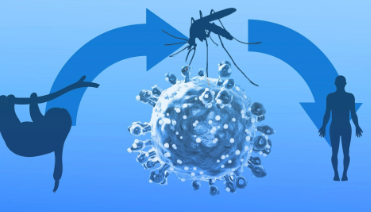Oropouche Virus
The Oropouche virus is insect-borne, meaning it spreads through insect bites, much like the dengue virus that is spread by mosquitoes. Since August 1, over 8,000 cases have been reported in South America. The virus has also spread to the United States and Europe due to international travel, even though these areas were previously unaffected.
How Does the Oropouche Virus Spread?
The Oropouche virus, also called sloth fever, is mainly spread by bites from infected biting midges, which are tiny insects similar to mosquitoes. In some cases, certain mosquito species can also spread the virus. The virus was first discovered in 1955 in Trinidad and Tobago and has mostly been found in South America and the Caribbean.
What Are the Symptoms of Oropouche Fever?
Most people who get oropouche fever experience symptoms similar to those of dengue fever. These symptoms include Headache, Fever, Muscle pain, Nausea, Pain behind the eyes, and rash.
In rare cases, more serious complications like meningitis (inflammation of the brain’s protective layers) or encephalitis (inflammation of the brain itself) can occur. The symptoms usually last between 2 to 7 days and can come back later. While the illness usually goes away on its own, it can cause complications during pregnancy, similar to the Zika virus.
How is Oropouche Fever Treated?
There is currently no vaccine for oropouche fever. Treatment mainly focuses on relieving symptoms. The CDC recommends taking acetaminophen to reduce fever and pain. It is advised to avoid aspirin, as it can increase the risk of bleeding.
Why Are Cases Increasing and What Precautions Can Be Taken?
The recent surge in oropouche cases is likely due to factors like climate change, increased human movement, deforestation, and changes in the virus’s genetics. With cases now reported in Europe, it is important to stay vigilant. Preventative measures, similar to those used for dengue and malaria, include avoiding insect bites by using insect repellent, wearing protective clothing, and using mosquito nets.
More About the Oropouche Virus
The Oropouche virus was first identified in 1955 in Trinidad. It is an arbovirus, meaning it is spread by mosquitoes, particularly the Culex species. The virus causes Oropouche fever, which is characterized by headaches, fever, and joint pain. It is commonly found in tropical regions of South America, with outbreaks in countries like Brazil and Colombia. Because its symptoms are similar to dengue, it can be easily misdiagnosed. Recently, there has been a rise in Oropouche fever cases in cities, showing that the virus is adapting to new environments. Despite its impact, there is still limited research on how the virus causes disease.
Month: Current Affairs - August, 2024
Category: Environment Current Affairs








